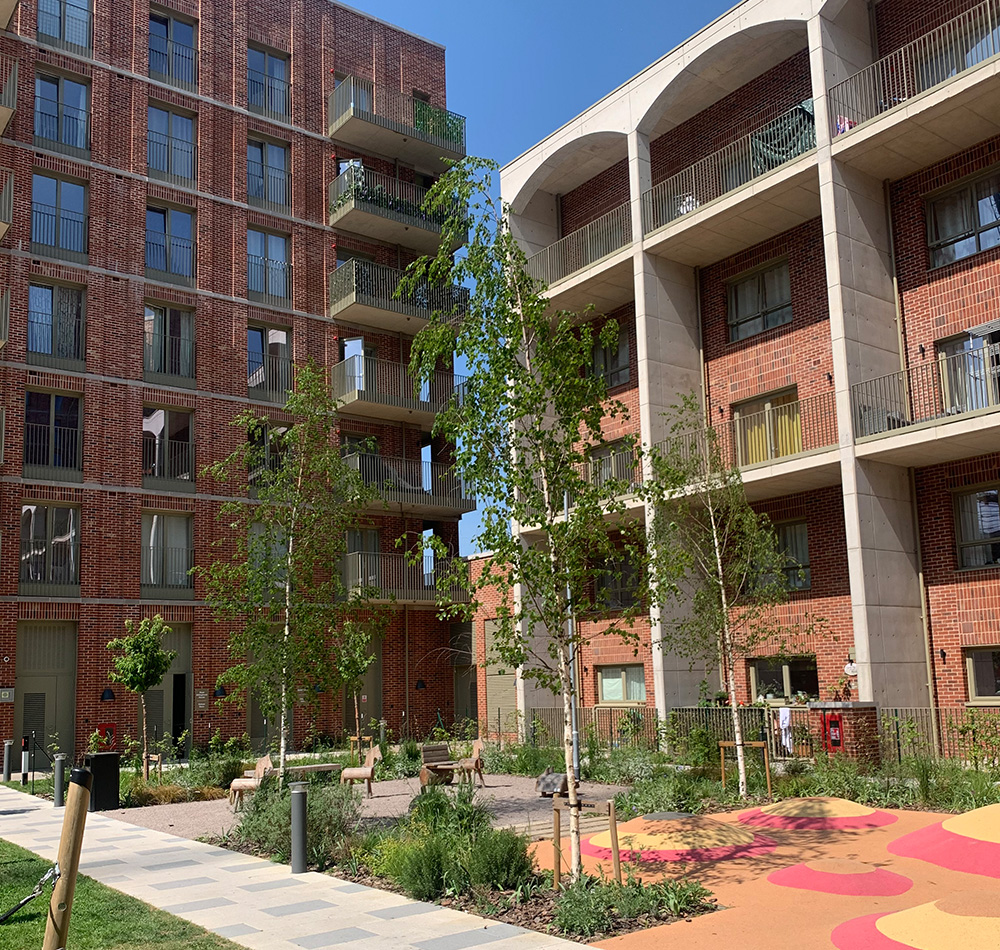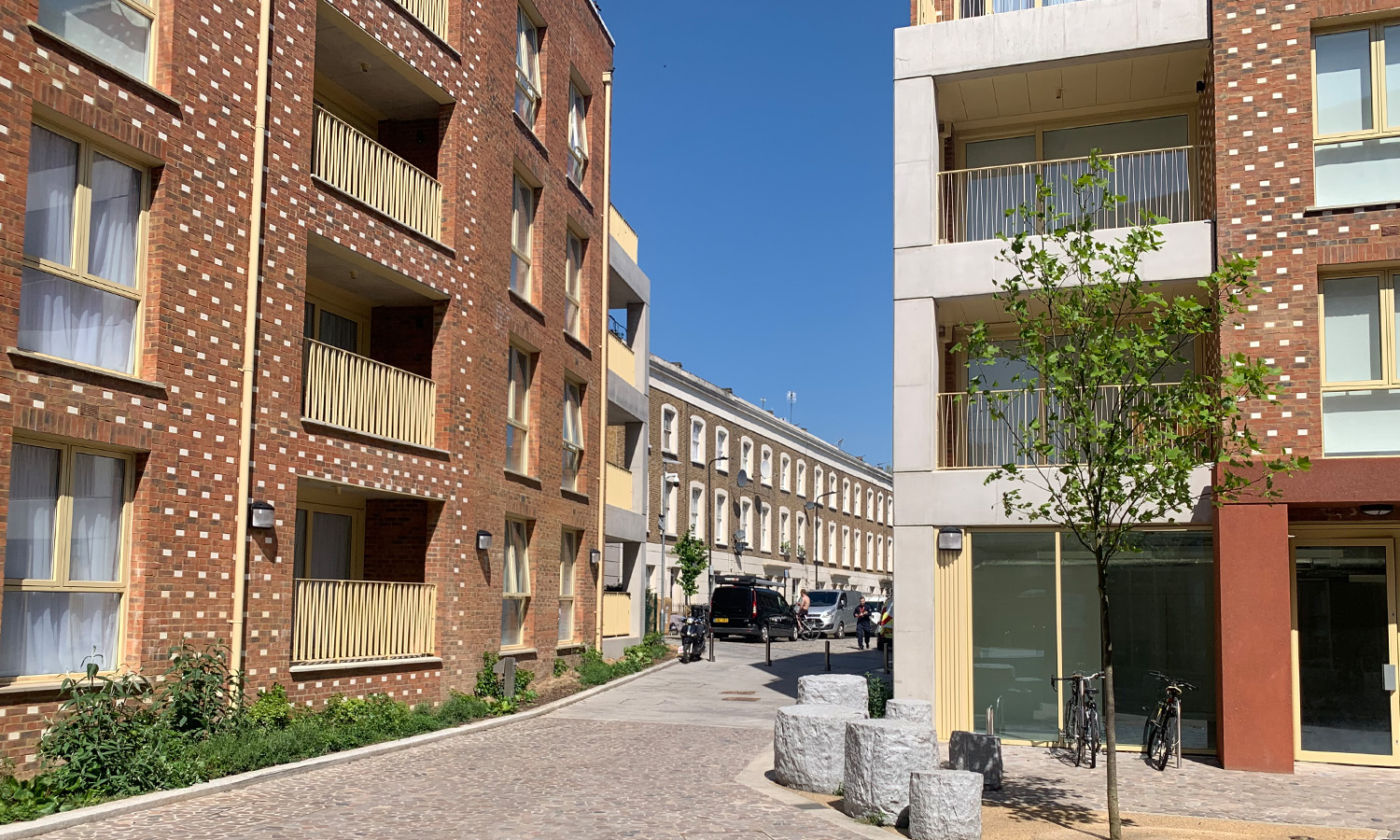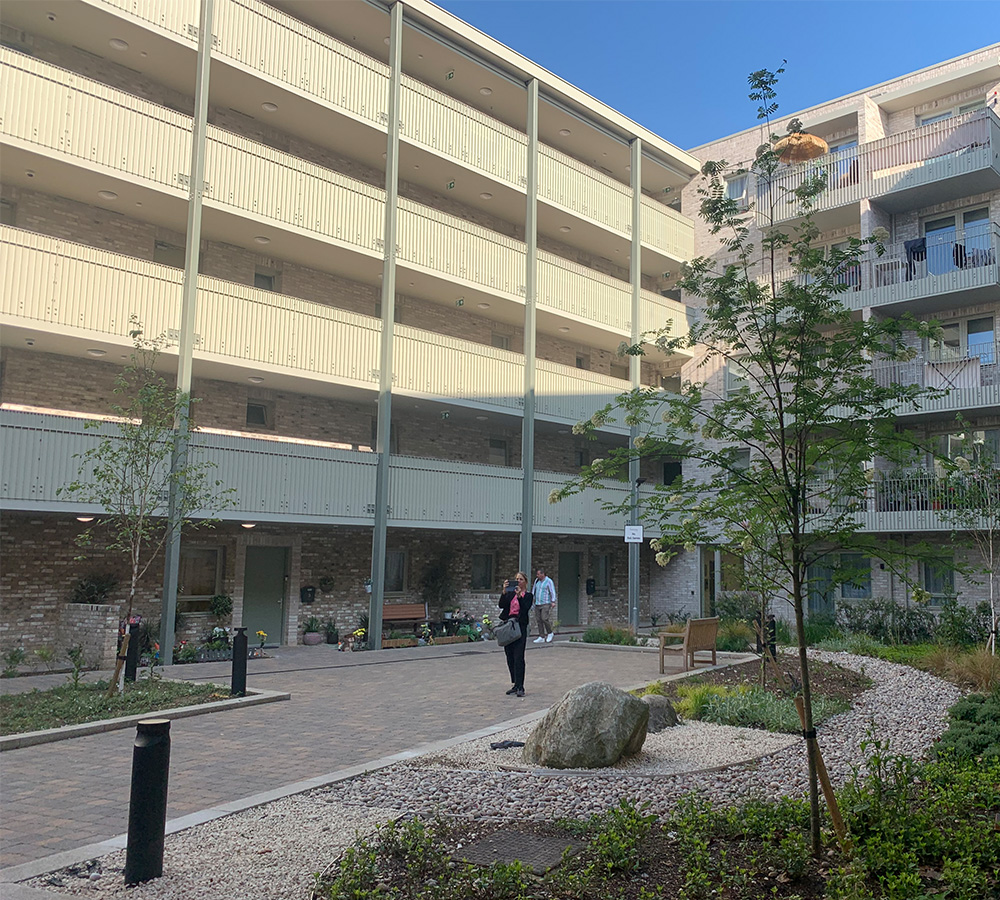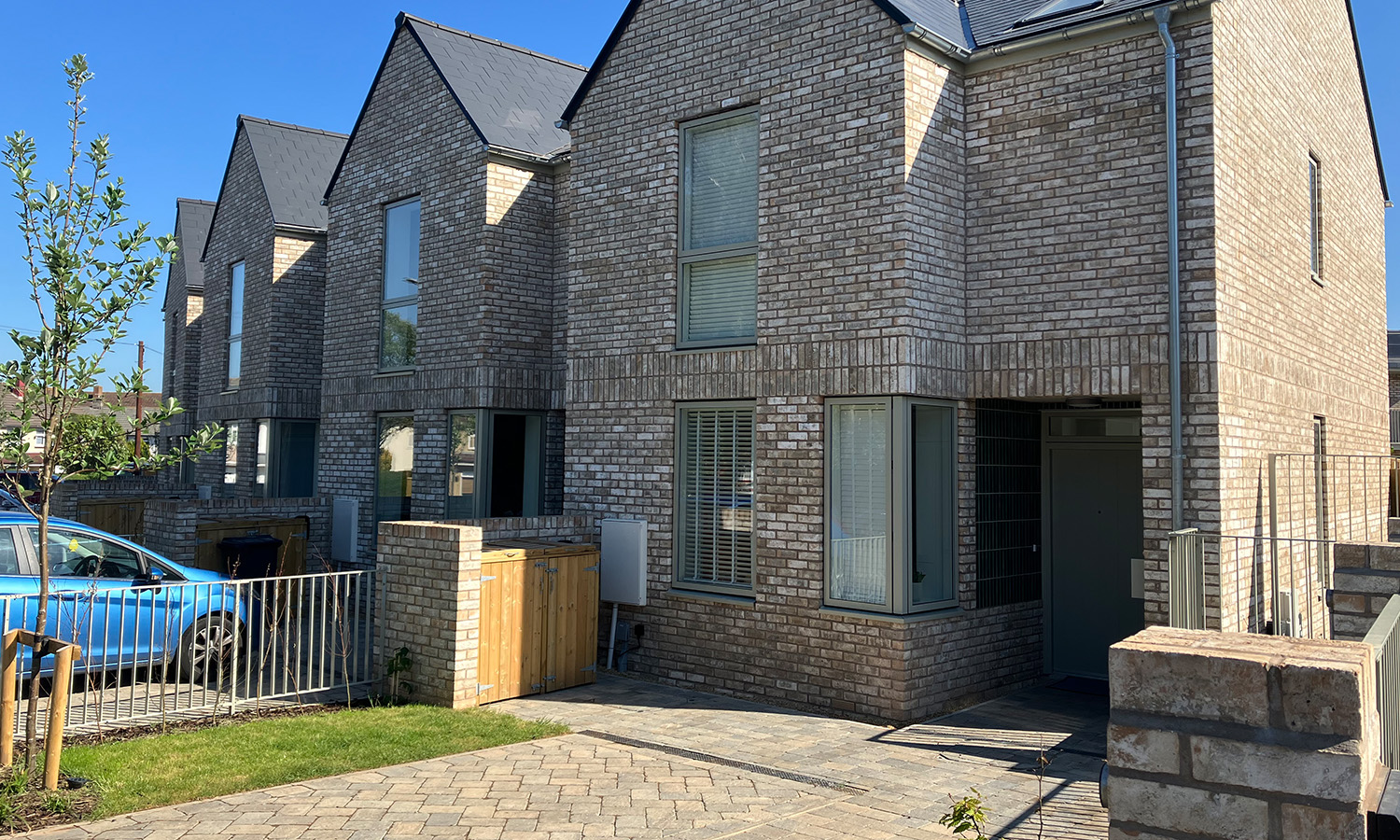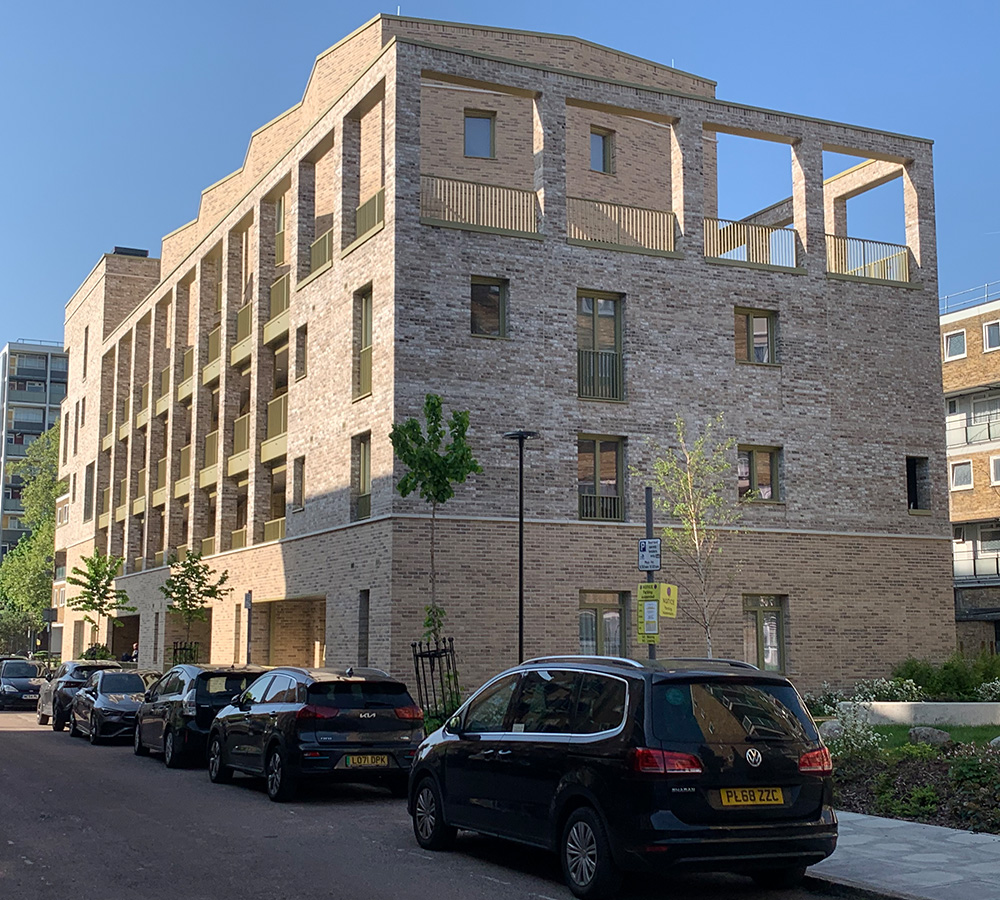This Spring the Housing Design Awards judges visited 22 completed housing schemes travelling 1266 miles each, over five days of visits in England.
They saw uplifting design excellence in a range of schemes, from moderate to high density, including suburban, urban, and rural sites. They saw the best of housing for refugees, affordable homes, co-housing, student housing and homes for the more fortunate in later life. They saw sites ranging from 8 homes to over 500, delivered by a variety of design teams including those starting out in their careers to well-known multi-disciplined practices commissioned by small scale and large-scale housebuilders, local authorities, charities, and community-led clients.
Amongst these schemes were a number of local authority-led projects focused on providing 100% affordable housing. This blog provides some personal views on the design lessons and potential replicability of some of the shortlisted projects, including a number of high quality local authority-led projects focused on providing 100% affordable housing we want to highlight.
Kidbrooke Park Road
The first phase of Kidbrooke Park Road is complete providing 117 high quality affordable homes across four distinctive blocks for the Royal Borough of Greenwich, along with an onsite nursery, community space and associated public realm.
Lessons in design quality
High quality accommodation: the scheme sets a high standard for affordable housing in the Borough. The schemes’ central block (‘Block B’) is comprised of 20 dual-aspect family units with private amenity spaces across four levels of maisonettes and family sized flats on the top floor. These homes overlook two shared amenity spaces to the rear and front of the building: the ‘Green’ is dedicated to play spaces for younger children (0-4 year olds and 5-11 year olds) and the ‘Communal Garden’ designed with play spaces for older children and informal spaces for adults. The bottom tier of maisonettes in Block B have their front doors facing the Green. These enclosed and surveyed amenity spaces are framed by the attractive brick-dominated facades of the building, articulated with arches and recessed balconies to reflect its central location and to amplify the sense of arrival to the site.

Highgate Newtown Community Partners
The site is located at 25 Bertram Street, London, within the Dartmouth Park Conservation Area, Camden. Completed in 2024, the Council-led scheme forms part of the Community Investment Programme (CIP) and includes the provision of 41 homes, 7 of which are affordable, public realm improvements, new routes through the site and the reprovision of the existing Highgate Newtown Community Centre (HNCC) and Fresh Youth Academy (FYA) community facilities.
Lessons in design quality
Community and residential interfaces: The right of way, linking Croftdown Road and the rear of Bertram Street was diverted, widened and improved as part of the scheme to provide a more attractive route through the centre of the site and across the public courtyard. A key benefit is the improved safety and security for properties to the west of the site as the rerouting of pedestrians through the public courtyard now allows for rear gardens to directly face adjacent rear gardens. Activity is directed past the accessible ground-level community building entrances, creating a more dynamic interface between the community building and enhanced public realm.
Bulrush Court
Completed in 2024 as part of a wider regeneration project, Bulrush Court in Bromley-by-Bow, London, is a seven to nine-storey mansion block offering 114 affordable homes. The 1930s style mansion block is U-shaped in footprint and features curve-cornered balconies.
Lessons in design quality
Designing a mansion block typology to create high density, viable, human scale development: the enclosed and generously sized communal courtyard with play spaces creates a human scale and welcoming centre to the mansion block. This courtyard also forms a green interface with the private amenity spaces of the ground-floor flats and to main corner entrances. The façade incorporates lighter, red banded brickwork for the courtyard, compared to a mix of darker banded brickwork on the civic side, which enhances light levels for the flats and visually defines the communal space.
Plashet Road
Plashet Road is a 100% affordable housing development in Newham, London. Completed in 2024, the scheme provides 65 new homes, including 74% family dwellings and a nursery. Plashet Road was part of the Affordable Homes for Newham Programme 2018-2022.
Lessons in design quality
Gallery access location: gallery access is located to the north or east of each building to enable the majority of balconies, living rooms, and bedrooms to be south- or west-facing where they benefit from solar gain in winter months and higher daylight levels.
Developing three typical flat typologies to improve viability and living comfort: each typology is greater in width than depth. This ensures that all flats are dual or triple aspect with optimised natural ventilation and daylight and floor plans can be designed to locate bedrooms and living spaces away from the semi-private gallery access.
New Kingsland Housing
Completed in January 2025, Bristol City Council have developed 16 low energy and affordable homes on the site of a former 1950s Church on Passage Road in Henbury.
Lessons in design quality
Attractive affordable homes: the site comprises a crescent shaped terrace of 10 two storey family homes which front the street and a two storey block of smaller 1 bedroom flats to the rear. The family homes are all attractive and are well designed to support family living in numerous ways. Homes feature large windows to take advantage of natural light from the southwest facing orientation and large inset porches feature glazed tiles to create distinctive and welcoming entrance spaces. There are dedicated refuse stores for each property which are inconspicuously sited within individual front gardens, and each home has a parking space, private rear garden with cycle storage and access to a communal garden. Overall, the homes have been successfully designed to be attractive and support the daily activities and needs of families.
Bancroft and Wickford Street
Completed in 2024, the scheme has regenerated two sites on the Bancroft Estate in Tower Hamlets, London by providing two contemporary buildings offering 33 homes for council tenants and community facilities including a new neighbourhood park.
Lessons in design quality
Being a 'good neighbour' in estate regeneration: many aspects of the design are neighbourly, including the scale and mass being driven by the need to safeguard daylight and sunlight levels received by surrounding residential buildings. Height was appropriately directed to terminate the taller residential block to the north. Streets are activated by generous semi-recessed balconies and roof terrace, carefully fenestrated ground floor offices for the local Bancroft Tenant Management Co-operative and Women’s Inclusive Team, a local community organisation. The surrounding public realm is extended and enhanced for exisitng and future residents with pedestrian routes, tree planting, lighting and a new neighbourhood park.

